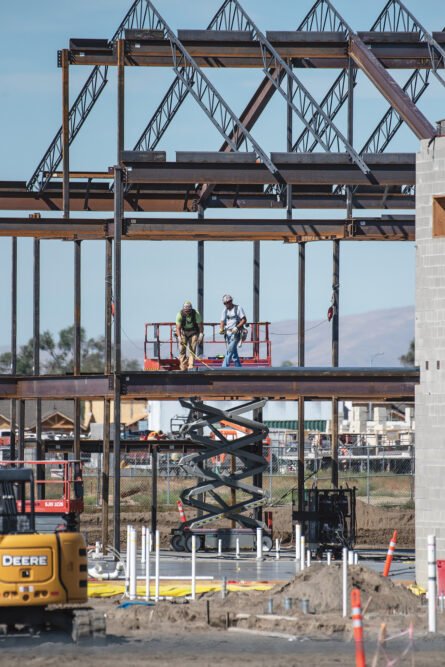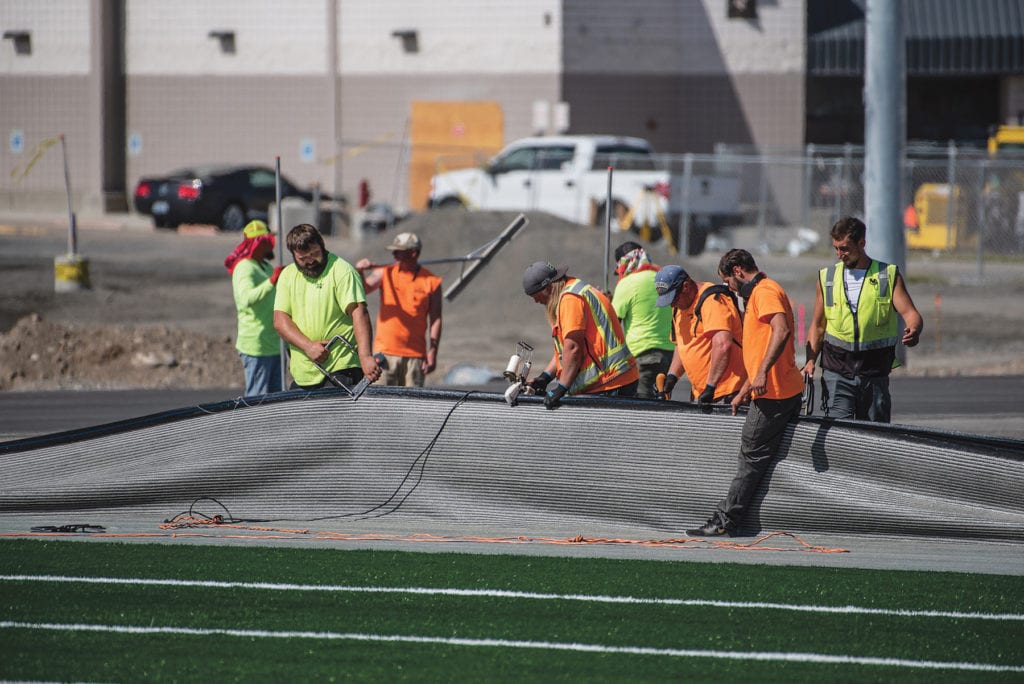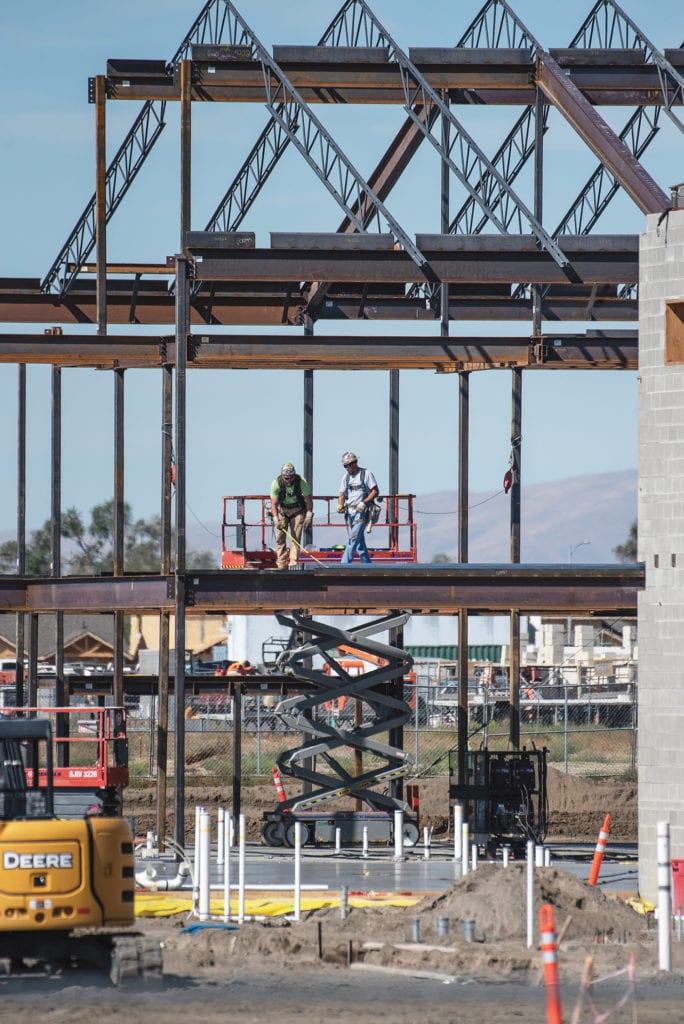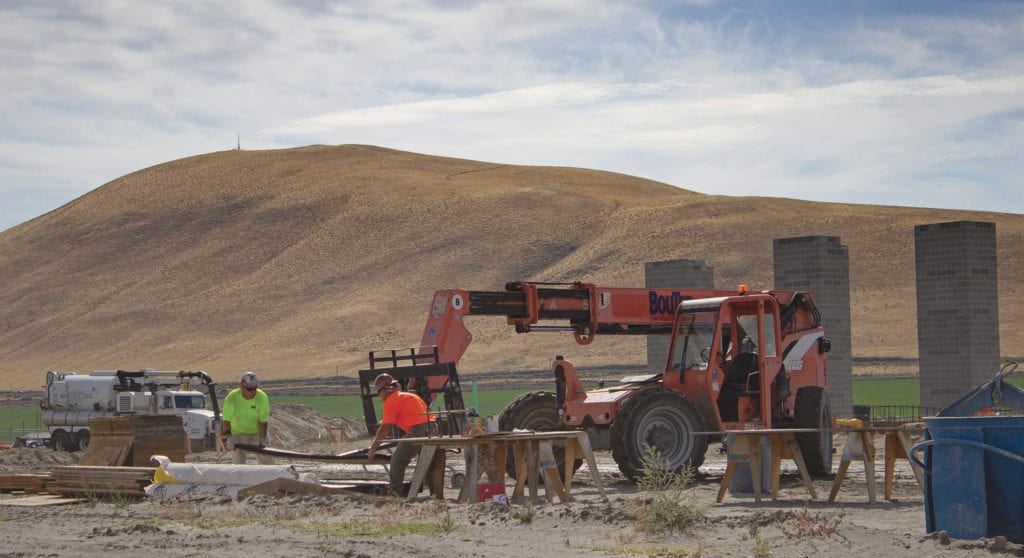
Home » K-12 education: New schools open as Tri-Cities grows
K-12 education: New schools open as Tri-Cities grows

October 15, 2019
As the Tri-City’s population climbs toward 300,000, its three school districts continue to work to keep pace with it.
Student enrollment numbers for 2018-19 put Kennewick’s student enrollment at 19,750 students; Pasco’s at 18,774; and Richland’s at 14,204, according to data from the state Office of Superintendent of Public Instruction.
Voters seem to understand the districts’ facilities needs by supporting multimillion dollar bonds for new schools and other improvements.
In February 2019, Kennewick voters approved a $125 million bond, and together with matching state dollars, the district is getting new schools and renovating others.
The Pasco School District is completing projects funded with a $99.5 million bond voters approved in 2017.
In the Richland School District, projects chug forward thanks to a $99 million bond passed in 2017 and $42 million in state matching funds.
Here’s a look at what’s going on in each district:
Kennewick School District
The biggest project paid for with the 2019 bond is the new Kennewick High School, estimated to cost $87.4 million.
A new two-story school will replace the 1951 building. It will include a science wing and dining commons, and connect to the existing Lions’ Den gym and remodeled auditorium.
The school, built for a maximum of 2,000 students, will be about 292,000 square feet.
Construction began in summer 2019, and it’s set to be completed by August 2021.
Kennewick’s two other main high schools also will see improvements.
Kamiakin High is getting 12 new classrooms and athletic facility improvements, including artificial turf to replace existing grass fields, a track replacement, additional restrooms, concessions and sports storage and refurbished tennis courts.
Construction is set to start in spring 2020 and to be complete in August 2021. The expansion will help the school house up to 2,000 students.
Southridge High also is getting 12 classrooms and athletic facility improvements, including a 3,200-square-foot weight training facility and artificial turf to replace existing grass fields. Construction begins in spring 2020 and should be complete by August 2021.

Both the Kamiakin and Southridge projects are estimated to cost $17 million each.
In addition, $10 million has been allocated for the Tri-Tech Skills Center expansion.
The project will add 16,000 square feet to the existing building to house the culinary arts and pre-physical therapy programs. There also will be an improved and more secure entrance area.
Construction is set to start in October 2019 and should be complete by summer 2020.
Other projects from the bond will come later, such as the remodel and replacement of Ridge View Elementary.
It’s one of the smallest schools in Kennewick, with 20 classrooms and three portables. The planned expansion will enlarge it to 30 classrooms, at a cost of $30 million.
Construction begins in summer 2023 with completion by August 2024.
And elementary school No. 18, a $30 million school with 30 classrooms, will be built in a high-growth area of Kennewick yet to be determined. Potential sites include the Badger Mountain South area or to the west of Southridge High School. The timeline is between 2022-25.
The district recently completed projects paid for with its 2015 bond.
The Mid-Columbia Partnership, in which the gymnasium from the old Desert Hills Middle School was renovated to meet the needs of the program that supports home-schooled students and families, opened in January 2019, at a cost of $6.7 million.
The Keewaydin Discovery Center opened in January 2019 with four additional classrooms, at a cost of $1.5 million.
Legacy High School students moved into a remodeled former City Church property in April 2019.
The district spent $3.5 million on the 18,000-square-foot building that serves 250 students throughout the district.
And finally, the first phase of the Amistad Elementary School project—a new detached addition of 22 classrooms, a gym and offices—was finished in August 2019. The building is for students in grades 3-5.
The second phase—in which the old school will become a new 20-classroom school for grades K-2—began in spring 2019 and is scheduled to be complete in August 2020.
“The project costs for Amistad Phase 1 and 2 have been updated based on the accepted bids,” said Robyn Chastain, district spokeswoman. “Phase 1 is $14.1 million and Phase 2 is $14.7 million.”
More growth, and with it more schools, continues to be in the forecast for the Kennewick School District, according to the district’s Capital Facilities Plan for 2018-28.
The district plans eight more renovations or new middle and elementary schools between 2025-29, with estimated project costs ranging from $28 million to $45 million.
This is, of course, is pending school board approval.
“Based on the current 10-year Capital Facilities Plan, the district would need to run another bond in 2025,” Chastain said.
Pasco School District
Pasco School District’s new $27.3 million Three Rivers Elementary welcomed students in August 2019.
More big school construction projects are underway:
- Columbia River Elementary, a $28.5 million school with 72,000 square feet. Construction began in May 2019. The school is expected to open in August 2020.
- The replacement of Stevens Middle School with a newer school on the same campus. The $39.7 million school will have 106,000 square feet and be ready for students in August 2021. Construction began in August 2019.
- Ray Reynolds Middle School, a $46.5 million school with 115,000 square feet. Construction started in April 2019. The school will open in August 2020.
“I have had three schools at the same time before,” said Randy Nunamaker, executive director of the district’s Capital Projects Department. “But I have never had three schools of this size. It’s a total of almost 300,000 square feet between the three. It helps that Stevens and Reynolds are virtually the same design. And Columbia River is the same design as Three Rivers.”

In addition, part of the 2017 bond pays for $900,000 in safety and security improvements at the front entrances of several schools.
“We believe it’s necessary in this day and age,” Nunamaker said.
Also earmarked in the budget is $800,000 for roofing projects at several schools.
As the district continues to add more students, it also requires more buses to take them to and from school.
And more buses mean more maintenance.
A portion of the 2017 bond included money for adding two new pull-through bus mechanic bays, replacing the transportation office and drivers’ areas with a single, insulated metal building and updating the current maintenance facility.
At the time of the bond vote, the district had 162 buses and three bays. Pasco had a 47-to-1 bus-to-bay ratio, compared to 25-to-1 in Kennewick and 20-to-1 in Richland.
Total cost of the maintenance bays are $1.6 million, and the transportation facility’s estimated cost is $1.4 million.
“Hopefully, we can start in the spring (2020) on those projects,” Nunamaker said.
Another part of Nunamaker’s job is to find more land for the district for future schools.
“We’re working on it,” he said.
Asked if there were plans to have another bond in the near future, he says it’s possible.
“The board is planning for another high school,” he said.
It would be the district’s third big high school, complete with a gym and athletic facilities, with room for 2,000 students.
The district and school board are reviewing when a future bond could be put before voters—it could be as early as the fall 2020.
Other options include replacing or improving older schools and facilities.
Richland School District
The remaining project from Richland School District’s 2013 voter-approved bond was completed in September 2019, said Richard Krasner, the district’s executive director of support services.
The multiyear renovation transformed the 1982 wing of the old Jefferson Elementary into an Early Learning Center to serve preschoolers.
The first phase was completed in August 2019 for $264,000. The second phase was completed in September 2019 and included an expanded parking lot, which cost $1.2 million.
Now, the district is tackling projects funded by the 2017 bond.
The $17.5 million elementary school off Belmont Boulevard in West Richland, known as Elementary No. 11, was completed in August 2019, and it welcomed the students from Tapteal Elementary.
The old Tapteal school, also in West Richland, has been torn down to be rebuilt during the 2019-20 school year. This new $19.9 million school will be ready for students to move back in August 2020.
When the Tapteal students return to their home school, Elementary No. 11 will welcome Badger Mountain Elementary students for the 2020-21 school year while its school is replaced. It’s at the same site as the old one, with a project completion date of August 2021.
A 12th elementary school also is planned in south Richland, near the Badger Mountain South residential development off Dallas Road. A timeline for this school has not been set.
Meanwhile, work has begun on a $9.4 million Richland High auditorium renovation.
The district began the design process in spring 2019. The permitting process begins in winter 2020, with the project completion set for July 2021.
Krasner said everyone seems to be happy with the plan.
“We’re going to gut the interior,” Krasner said. “We’ll remove all of the seats. We’ll make some aisle way, have better (Americans with Disabilities Act) access. We’ll also be adding bathrooms—more for women—and change the stage.”
Krasner said when school lets out in June 2020, construction should begin.
Two other projects funded by the 2017 bond involve athletics.
Fran Rish Stadium is getting home side improvements and installation of field turf, at a cost of $10 million.
Programming and community input meetings were held in fall 2018. The design process begins in spring 2021, with the project set for completion by August 2023.
Meanwhile, Hanford High is getting updated fields with artificial turf, a resurfaced track and a 2,000-seat grandstand with press box, new restrooms and concession building—a $6 million project.
In the spring 2020 the design process begins, and the project is expected to be completed in August 2022.

The construction of the district’s new $11.6 million Teaching, Learning and Administrative Center, or TLAC, will be completed in September 2020.
“It will be right next to Libby Middle School in West Richland,” Krasner said.
In addition, Krasner is looking for land throughout the district for future schools.
“We have eight acres out there for the TLAC,” Krasner said. “But we have over 72 acres of land out there. And I’m always looking for land as the district grows.”
Krasner guessed the next bond could be either 2021 or 2023, depending on what the school board wants to do.
But one thing the district needs to consider is building a third high school.
“Both high schools are over 2,000 kids now,” he said.
Construction + Real Estate
KEYWORDS october 2019





